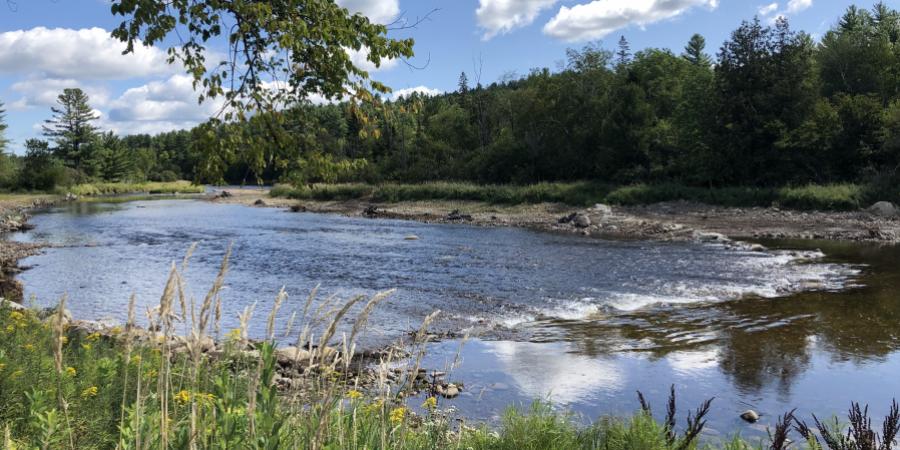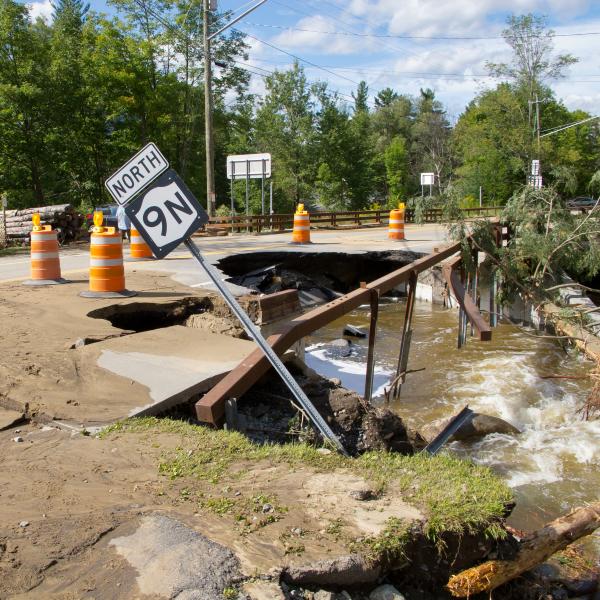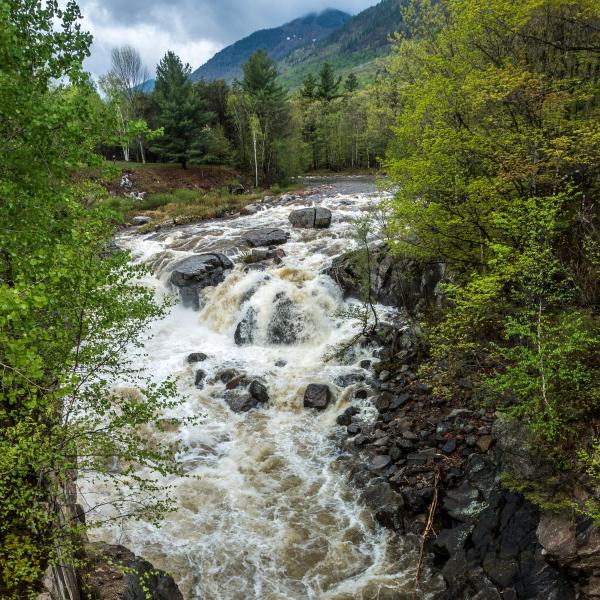Over the past 10 years the Ausable River Association has developed a regional reputation for successfully applying natural stream restoration techniques to protect the health of our waterways and communities. We've restored thousands of linear feet of streams and rivers in the East Branch and West Branch Ausable River watersheds. We work closely with our partners at the U.S. Fish & Wildlife Service, refining our approach as we meet new challenges and gain experience. Our hope is to demonstrate to landowners, communities, elected officials, and others that healthy restored streams are the foundation of flood resilience – safer roads, homes, and businesses – and of a vibrant community.
Our methods have always been steeped in an intimate knowledge of our watershed – surveys of streams, banks, and floodplains, an understanding of current land use, a knowledge of local history and climate, and conversations with landowners, residents, and town officials. Whether it's a small project or a comprehensive restoration plan, we strive to restore the form and function of a reach or stream section. Success means this section of stream will be self-sustaining – capable of managing flows and transporting sediment in the face of a changing climate while retaining its form. This is what geomorphologists call dynamic stability. A self-sustaining stream will support the ecosystems and communities that rely on it. To achieve this, we must move beyond simply repairing symptoms, such as an eroding bank, and make sure our work addresses the cause of dysfunction – why the bank is eroding.
To that end, we've adopted the methods detailed in the "Function-based Stream Restoration Project Process Guidelines" (Starr et al., 2016). These lay out a process with well-articulated project goals and objectives. They allow us to identify watershed and reach-level assessment parameters and measurement methods, conduct design alternatives analysis, develop restoration designs, and establish quantifiable and measurable monitoring performance standards. This protocol is based on the stream function pyramid, a model for understanding the components of stream form and function; that is, the interrelationship of hydrology, hydraulics, geomorphology, water quality, and biology.
We follow eight sequential steps, briefly summarized below. They create a transparent process that directly links programmatic goals with design elements to support self-sustaining stream function.
Identify project goals – understand what is driving the project and why it is being proposed.
Assess the full watershed – determine the health of the subwatershed and its influence on the project area.
Survey and assess stream function at reach scale – establish existing conditions at each functional level; determine stresses, strengths, constraints, and the future evolution of the channel in the target reach.
Establish restoration potential – determine the level of restoration that can be achieved, given knowledge gleaned during the above steps.
Set design objectives – establish the design objectives based on project goals, assessment results, constraints, and restoration potential.
Determine design approach – identify the design approach that can change stream functions to meet project goals and restoration potential.
Develop selected design – create a design plan that follows the approach chosen and meets project goals.
Establish monitoring plan – measure, over time, whether quantifiable project goals are achieved without harming the pre-restoration strengths of the stream.
Each step builds upon the one before, and at each step, programmatic goals and design objectives are re-evaluated to ensure they can still be achieved. The assessment steps draw upon existing knowledge, reports, maps, GIS, and hydrologic modeling but emphasize in-field data collection, especially in the target reach. It's an efficient and effective process that helps us pursue goals and connect symptoms to their causes while avoiding unnecessary tasks. And a process that allows us to communicate our recommendations and the rationale for them to officials, permit agency representatives, funders, and the public.
Getting stream restoration right, restoring self-sustaining streams, is the key to vibrant and resilient Adirondack communities. Self-sustaining streams with access to their floodplains absorb and manage flood flows more predictably – even in the face of the increasingly intense storms that are the new normal in the Adirondacks and elsewhere. They manage sediment efficiently, maintain riffle and pool features, and support lush riparian buffers. These, in turn, provide obvious benefits for ecosystems - creating wildlife habitat, migration pathways, and cooling water temperatures. They protect water quality by reducing erosion and nutrient releases to natural levels. Less obvious, but just as important, restoring streams to self-sustaining resilience also improves public safety – reducing and often eliminating damage to public infrastructure, homes, roads, and businesses. The costs of infrastructure maintenance are reduced as are emergency response costs during and after flood events. And healthy streams with verdant green banks and floodplains are beautiful, offering multiple opportunities for public enjoyment and recreation.
Freshwater is essential to all life. For millennia, streams, lakes, and wetlands, interacting with groundwater, have transported and safeguarded the freshwater we all rely on. Protecting and restoring local waterways – nature’s water infrastructure – is the most efficient and equitable way to ensure the long-term quality of water. Getting restoration right – ensuring streams are self-sustaining – is the key to freshwater health, ecosystem health, and community health.
Story by Kelley Tucker, Executive Director.
Sign-up for our e-newsletter to get weekly updates on the latest stories from the Ausable River Association.




